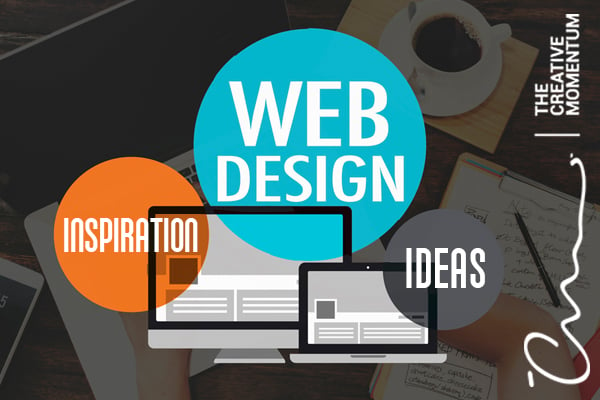A Comprehensive Guide to Best Practices in Website Design for Enhanced Customer Experience
In the realm of internet design, recognizing customer needs is paramount for developing reliable electronic experiences. A well-structured technique that highlights receptive layout, user-friendly navigation, and a strong aesthetic hierarchy can dramatically improve customer engagement.
Comprehending Individual Demands
Understanding individual requirements is essential to efficient internet style, as it straight affects individual experience and interaction. A detailed understanding of target audiences permits designers to create web sites that resonate with individuals, promoting a sense of connection and satisfaction.

Importance of Responsive Layout
Receptive style is important in today's digital landscape, where users accessibility internet sites throughout a myriad of gadgets with varying display dimensions. As smart phone usage remains to climb, making certain that a site gives an ideal watching experience on smartphones, tablet computers, and desktop computers is vital. A responsive design adjusts the design and content based upon the user's tool, enabling seamless navigating and readability.
Additionally, responsive layout substantially influences seo (SEO) Online search engine, such as Google, prioritize mobile-friendly websites in their ranking algorithms. A responsive internet site can enhance presence, leading to enhanced website traffic and user involvement. Additionally, a constant user experience across tools builds brand name reputation and promotes customer loyalty.
Moreover, implementing responsive style can bring about reduced advancement and upkeep prices. Rather than creating several versions of an internet site for numerous devices, a single responsive site enhances updates and material monitoring. This efficiency not only saves time but likewise makes sure that customers obtain one of the most existing details despite just how they access the website.
Simplifying Navigating

To attain streamlined navigating, web designers ought to prioritize a logical hierarchy of web content. Making use of detailed tags for menu products can aid customers recognize the function of each section at a glance. Additionally, minimizing the variety of food selection things decreases cognitive load, permitting customers to concentrate on the most vital facets of the website.
Integrating a search function is additionally useful, as it gives users with a direct path to specific web content. In addition, ensuring that navigating elements correspond throughout the site fosters knowledge and simplicity of use. Responsive design concepts should also be put on navigating food selections, guaranteeing they operate smoothly across all devices. Ultimately, streamlined navigating not only boosts user fulfillment yet additionally adds to attaining wider service goals by increasing conversion prices and minimizing bounce prices.
Enhancing Aesthetic Hierarchy
Just how can developers develop an aesthetic power structure that overviews customers through web content seamlessly? The answer exists in the tactical usage of style elements that guide attention and facilitate understanding.
Additionally, the usage of whitespace is important in developing breathing space around content. This not just prevents overwhelming the customer yet also stresses crucial elements, making them stick out. Typography also plays a substantial function; utilizing differing typeface weights and designs can distinguish between primary and second information effectively.
In enhancement to these methods, visual signs such as arrowheads check over here or icons can lead individuals through the interface, reinforcing the intended circulation of information. By attentively combining these elements, developers can create a compelling aesthetic power structure that enhances customer experience, ensuring that important material is easily accessible and recognized. This mindful orchestration of style aspects eventually cultivates an extra intuitive communication with the internet site.
Maximizing Web Page Tons Rate
In the hectic electronic landscape, maximizing web page lots rate has actually ended up being a critical element in user fulfillment and retention. Study suggests that customers expect website to pack within two seconds; any kind of hold-up beyond this threshold can bring about boosted bounce rates and lowered conversion possibilities.
To boost tons speed, begin by minimizing HTTP demands, as each request contributes to the loading time. Utilize strategies such as CSS sprites to integrate several images into one, reducing the that site variety of demands. Furthermore, maximizing images through compression and the usage of contemporary formats like WebP can significantly lower data dimensions without jeopardizing top quality.
Carrying out web browser caching additionally plays an essential role in boosting page rate. By storing regularly accessed files in your area on an individual's device, subsequent brows through can fill practically instantly. Additionally, take into consideration leveraging Material Delivery Networks (CDNs) to distribute material closer to individuals, minimizing latency.
Verdict
To conclude, effective website design prioritizes customer needs via meticulous research study, fostering user-friendly and receptive user interfaces. By simplifying navigation, improving aesthetic hierarchy, and optimizing page lots useful source rate, developers create appealing and easy to use internet sites. Following these best methods not only enhances customer complete satisfaction however also grows loyalty and increases total engagement. Inevitably, a commitment to these principles is necessary for establishing effective electronic experiences that fulfill the progressing assumptions of individuals in an affordable on the internet landscape.